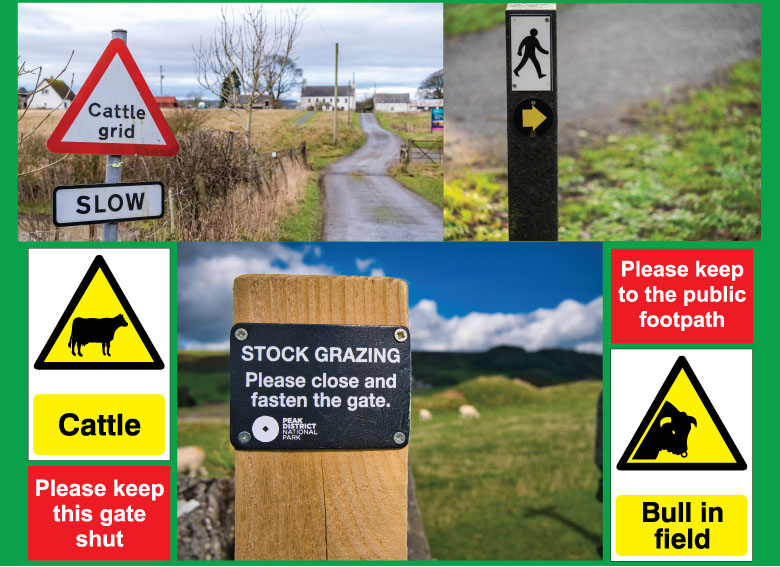
With the sun finally starting to appear, many people are heading to the great British countryside. While doing so, there are a few animals you are almost guaranteed to spot during your travels, one of the biggest being cows. There are 9.7m cattle in the UK, after all.
Generally, cows are not flustered by humans and are quite placid, however, like any animal, they can react when they feel threatened. So, although walking through and enjoying the countryside is typically safe, it is worth bearing the following tips in mind.
Are Cows Dangerous To Humans?
In most instances, cows are docile creatures and will pose no danger to you as you enjoy the countryside. However, that is not to say they cannot cause harm on a rare occasion.
According to a study by the University of Liverpool, over two decades, there were 54 attacks on walkers by cattle. 24% of these attacks were fatal. The remaining 76% resulted in injuries of various extents, from bruising and scratches to being knocked unconscious.
91% of Health and Safety Executive (HSE) reported cattle-related fatalities were caused by cows with calves, and research suggests that maternal defensive aggression could be to blame.
94% of walker fatalities and two-thirds of attacks involved dogs. To help avoid becoming that small percentage, follow the countryside code and these five tips.
Five TipsTo Stay Safe In The Countryside
1. Stick to the Path
On most routes, there is an extensive network of pathways. This can include pathways, bridleways, or simply well-worn trails through public access land. These are usually found away from animals with a fence in place.
Where a designated walkway is not in place, ensure to give livestock plenty of space.
2. Keep Your Dog On A Lead
The countryside can be a wonderful place to walk your dog and in some cases for them to run off their lead. However, make sure to consider nearby livestock when travelling through fields and farmland.
Often there will be signs which dictate if you must keep your dog on a lead, and some areas may ban dogs altogether. So, keep an eye out!
Where dogs are allowed in the same vicinity as livestock, keep your dog on a lead and away from the other animals and only let them off if you are confident that they will return on command.
However, if you feel threatened by cows or other animals in the field, make sure to let your dog off the lead. This will make it easier for you both to reach safety. Do not try and save your dog if there is an incident, as this could lead to you being harmed also.
If your dog needs to relieve itself, bag and bin the mess in a public waste bin or take it home. Do not leave it to collect later, and do not hang it on a tree. Not picking up waste can cause illness to people, livestock, and wildlife.
3. Leave Gates As You Find Them
You may think it is good manners to shut a door or gate behind you, but there is a little more to consider when enjoying the countryside.
Gates may be closed to keep animals in, but they can also be left open to allow access to food, water, and shelter. So, as a rule of thumb, leave gates as you find them.
Also, while it may be a shortcut, avoid climbing over boundary walls and fences and ensure to use gates and stiles where possible. This prevents damage and startling livestock.
4. Park Safely
The countryside is a beautiful place to visit, but traffic can be a blight on the landscape, as well as a danger to people and animals.
Drive carefully down lanes, and only park in designated areas. This will ensure you don’t block access to gateways and driveways, and that emergency vehicles can pass when needed.
Where possible, you could even use public transport!
5. Abide by Signage
When enjoying the countryside, keep an eye out for signage on fences, posts, and gates. Public access and private land will be identified using signage at most entrances, as well as notifications about any animals such as cattle warning signs.
If you get lost, rights of way are colour-coded for use by different groups:
Yellow arrow – a footpath for walkers and mobility aid users
Blue arrow – a bridleway for walkers, mobility aid users, horse-riders, and cyclists
Purple arrow – a restricted byway for walkers, mobility aid users, cyclists, horse-riders, and horse-drawn vehicles
Red arrow – a byway open to all traffic including motorised vehicles
Acorn – a National Trail for walking. Horse-riding and cycling are possible on some trails
Person walking over hills – open access. You can safely stray from the path
Your Farm, Your Future
The Health and Safety Executive (HSE) has launched a new campaign aimed at improving safety on British farms with a focus on livestock in 2024.
Your Farm, Your Future was born out of concern over statistics which revealed four farm workers were killed following incidents with animals on farms in 2022/23.
HSE Inspector Wayne Owen said:
“All large animals can be a risk to people. Even a gentle knock from a cow can result in people being crushed or falling. All cattle should be treated with respect.”
Stay Safe With Cattle Signs
If you are a landowner or work for a farm, we here at Label Source can provide you with farm safety and cattle signs to suit your needs. Browse our range and get in touch to learn more.
Prefer sand to grass? Then check out our post: Beach and Ocean Safety: Being Wise in the Water